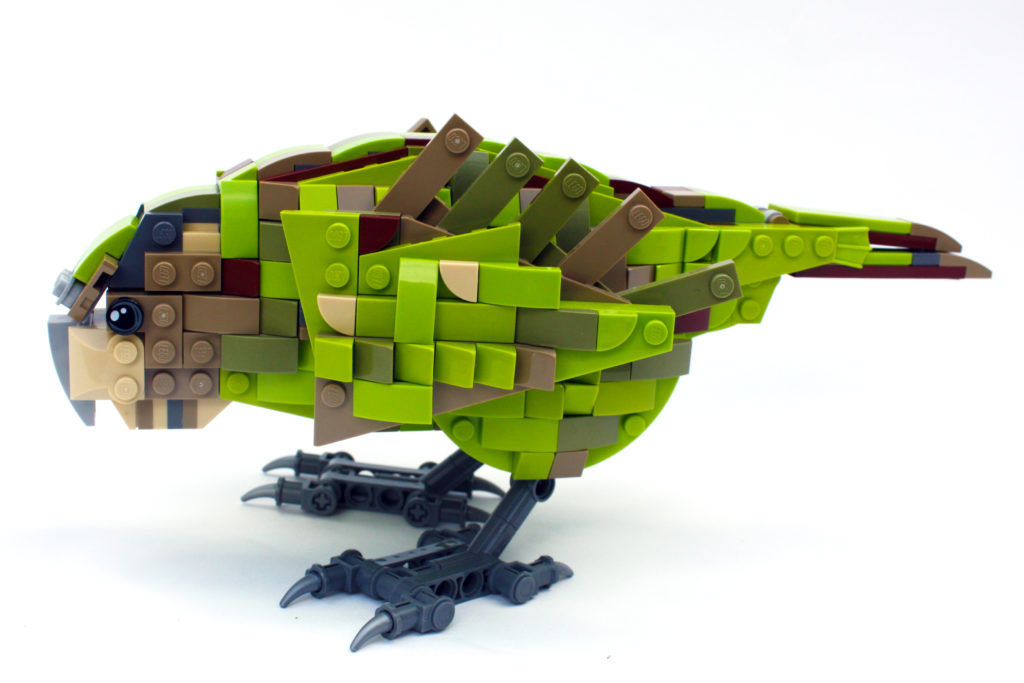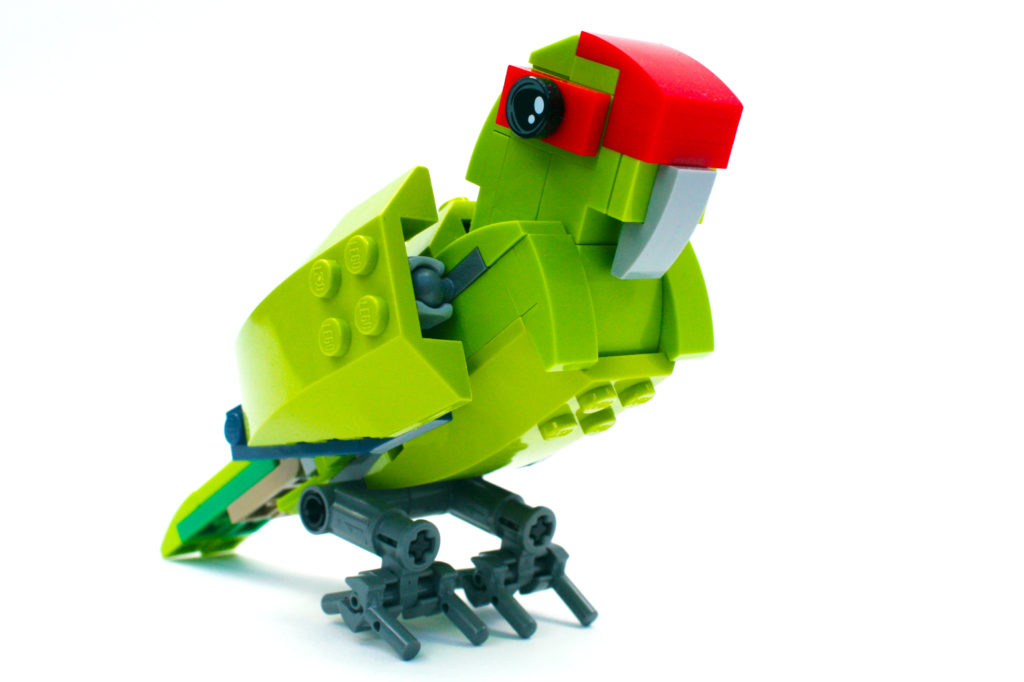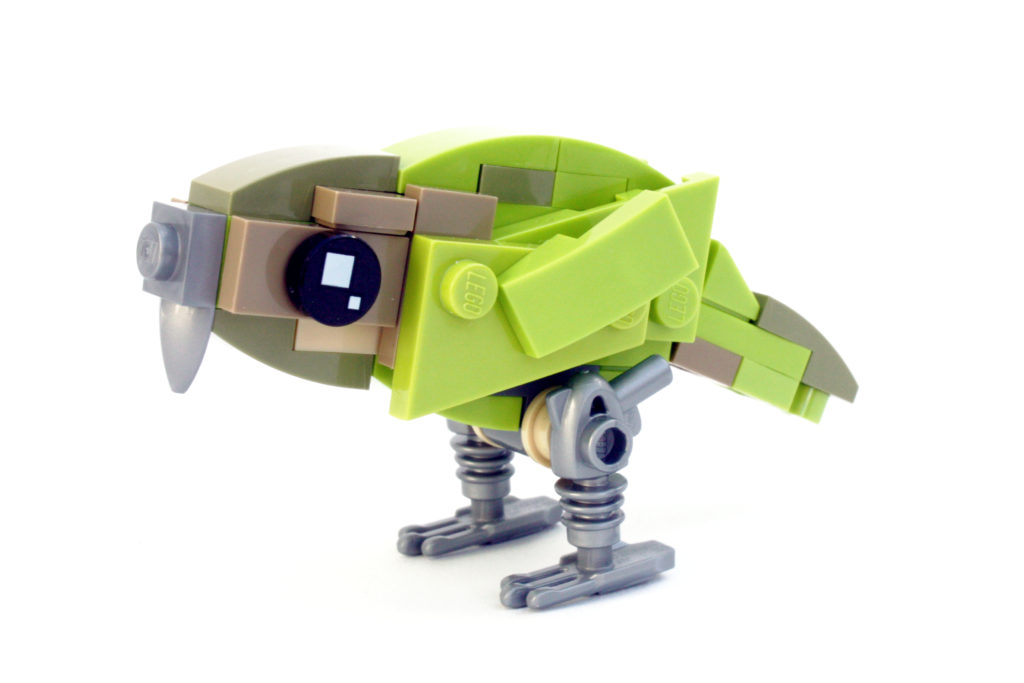University student Hayden P. is a Lego enthusiast with a passion for New Zealand birds. If his latest Lego design – a kākāpō – reaches 10,000 supporters on the Lego Ideas website then the design will be considered for commercial release as an official Lego product to be sold worldwide.

Come on New Zealand, let’s get voting! Who wouldn’t want to make a Lego kākāpō – vote now!
“It’s up to 7,150 supporters at the moment,” Hayden confirms. “About 4 times a year, Lego reviews the designs that get to 10,000 supporters, but they’re not guaranteed to produce them all. They might make none – or all of them.”
The kakapo’s international ‘conservation icon’ status may help it appeal to the Lego executives however.
“Lego is pushing a more sustainable product for the future,” says Hayden, “like making sugar-cane bricks rather than plastic made using fossil fuel.”
Maybe there’s scope for a whole ‘Lego Conservation Series’ of international wildlife models.
It’s the first time that Hayden has entered one of his designs on the site, but not the first native bird he’s designed in Lego.

“My latest New Zealand bird is a kakariki,” says Hayden. “I’ve also got a tui, fantail, North and South Island tomtits, a silver-eye and a kea, but the kea needs to be redesigned. I like to try and promote native birds, but I’ve also recently done a goldfinch and I’ve made male and female sparrows in a nest that is popular.”
If you visited the Auckland ‘Brick’ exhibition in November last year, you may have seen Hayden’s designs on display.
“I took about eight Lego birds and set up photos of the actual birds behind the display,” says Hayden. “I decided not to include the names of the birds which was good, because it got people asking and guessing. A lot of the young kids were getting it correct and some of them knew the Maori names as well,” he says. “But some of the adults were right off! It was pretty popular,” he adds. “A lot of people were pretty stoked.”
Hayden has been building with Lego since he was about 3 years old.
“Dad was buying sets for me before I was born,” he says, “So some of my sets are older than I am.”
The initial build for Hayden’s kākāpō design took about 15-16 hours, initially working with a digital programme for Lego designing.
“You can build along with the screen and see whether it works and how you might do it,” Hayden explains.
Hayden reckons he’s probably done another 30 hours work on improving the initial design since then.
“A couple of days ago I did some changes,” he says. “It’s up to about its 5th redesign.”
Hayden usually tries to build his new designs with bricks he already has.
“I get more creative if I’m restricted by parts,” he says. “I like to challenge myself, but I usually end up buying something. I sometimes buy a set to get parts or visit an online ‘store’. There are overseas stores that are ‘pick a brick’ on a site called ‘Bricklink’, where people have taken apart sets themselves to sell the bricks” he explains. “You can look at the site and order the parts and quantities you want.
The ‘Lego Ideas’ platform has a number of target stages along the way with an initial deadline of 60 days to reach 100 votes.
“Anyone can upload their Lego design to ‘Lego Ideas’,” says Hayden. “Once you’ve got 100 supporters, you’ve got another 365 days added to get to 1000, then 6 months to get to 5000 supporters and another 6 months to get to 10,000 supporters. So the whole process can take up to 2 years 2 months.”

So far, however, Hayden’s kākāpō is well ahead of the deadlines for reaching each target stage.
“I put it up on ‘Lego Ideas’ in June and got my first 100 supporters in 24 hours,” Hayden says. “You need to get about 13 supporters per day and I’ve been averaging about 33 per day. It’s had a lot of comments internationally too – maybe because people have seen Stephen Fry’s ‘Last Chance to See’.”
With 7,150 supporters at last count (and probably more by the time this story is posted), Hayden is tantalizingly close to reaching his 10,000 target.
“I designed the kākāpō as I am passionate about New Zealand and the conservation of its native species,” says Hayden. “I also feel that this product would be a fantastic way to teach people about a critically endangered species and get them interested in wildlife. If a commercial release went ahead, I would love some money to go towards ‘Kākāpō Recovery.”
So how about giving Hayden – and kākāpō – some support!
To support you need to register on the ‘Lego Ideas’ site first – it’s a way to discourage one person from casting multiple votes – but registering is free and every supporter counts in helping the kākāpō hit 10,000 Lego supporters!
Do it – do it now! Visit ‘Lego and Cast Your Vote for Kākāpō!
Read more information about our unique kākāpō here.

